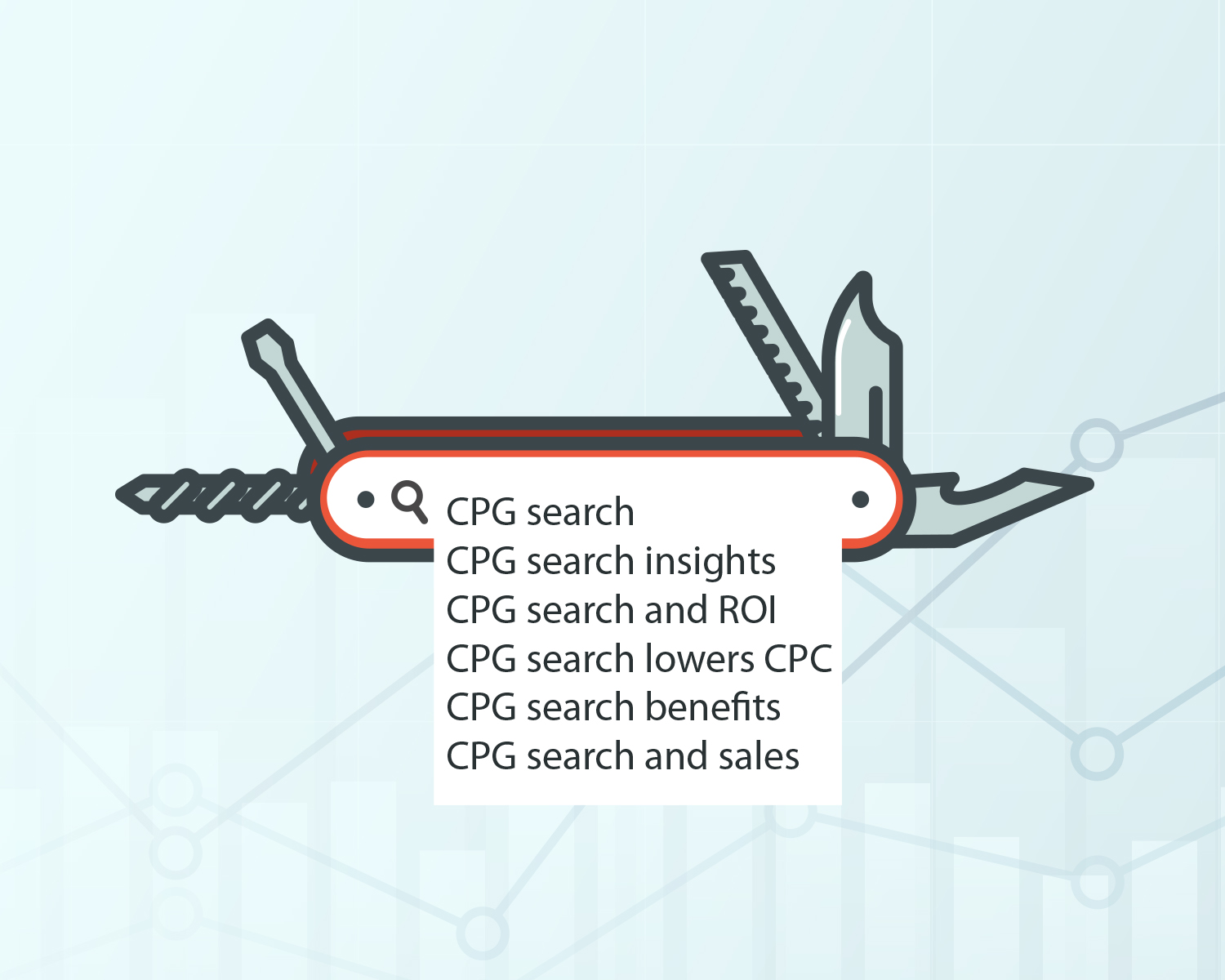
SEM: THE SWISS ARMY KNIFE OF CPG MARKETING
Is Search critical for CPG?
Yes! In more ways than you might think.
CPG perfected traditional marketing and branding, but digital advertising and ecommerce have disrupted their cozy spots at the top. By selling through retailers instead of direct, brands have been slower to adapt to digital but are catching up fast with upper funnel techniques, like social media, pre-roll and display, being a part of every marketing plan.
Search has been easy to ignore since most CPG sales are still through retail, not ecommerce, plus since the prevailing CPG mindset is that consumers aren’t searching for their products, which is not accurate.
Search now plays a very important role in driving both online and in-store sales — more than 60% of CPG shoppers searched multiple times throughout their journey before buying! 80% say what they learned had an impact on their ultimate purchase decision!
So, here are a couple of tips for how to get the most out of your marketing spend with Search.
1. Search is a great research tool.

It provides a key glimpse into the mind of the consumer. By analyzing their search activity, you can learn what’s on their mind. Search behavior has evolved to be more conversational. Use what you learn to refine your advertising messaging and website content. Look at the questions they are asking at each phase of their journey and develop content tailored to answer these questions. Here at GKV we use a tool called SEMRush to optimize our visibility across key channels and create engaging content for our clients’ consumers.
2. Search plays an important role in consideration.

Search plays an important role in consideration. Brand has declined in importance, which is a huge problem for CPG, as “brand” is generally their greatest strength. Improved product quality and marketing have made store brands a competitive option, and lower barriers to entry have resulted in more competition from new, niche brands. Search has made it very easy for consumers to hunt for the brands and products that best fit their very precise, personalized needs, and, as a result, lets consumers know your brand meets those exact needs they are searching for.
3. Search ensures that upper funnel ad dollars aren’t wasted.

Given the interchangeability of brands, don’t let all your effort and spend go to waste by not being there when consumers are ready to buy! Most consumers don’t click on banner ads, or drop what they are doing to go to a store to buy. When they are ready to buy, they will search for the best option, and having that search presence connect with past impressions can help to make the sale. For more tips on optimizing an ever-dwindling CPG marketing budget, click here.
4. Search is more than just expensive common keywords.

You don’t have to fight with other brands for the highest volume terms. Lower your CPC (cost per click) and increase your ACR (average conversion rate) by using long-tail and branded terms. The way consumers search has changed. They no longer type a few keywords and hope for the best. Now, they ask questions and add more descriptors to get more detailed results. So, bidding exact match or phrase match on a long-tailed term can be a very cost-effective strategy.
Within the CPG space, paid search remains an effective medium whether the goal is focused on awareness, conversion or consideration. By finding the right SEM strategy, brands can stay front of mind and reach a qualified audience that is more likely to convert, while also being less likely to waste ad spend. With numerous ways to utilize paid search, CPG brands only have more to gain by incorporating an SEM strategy into their marketing mix.

